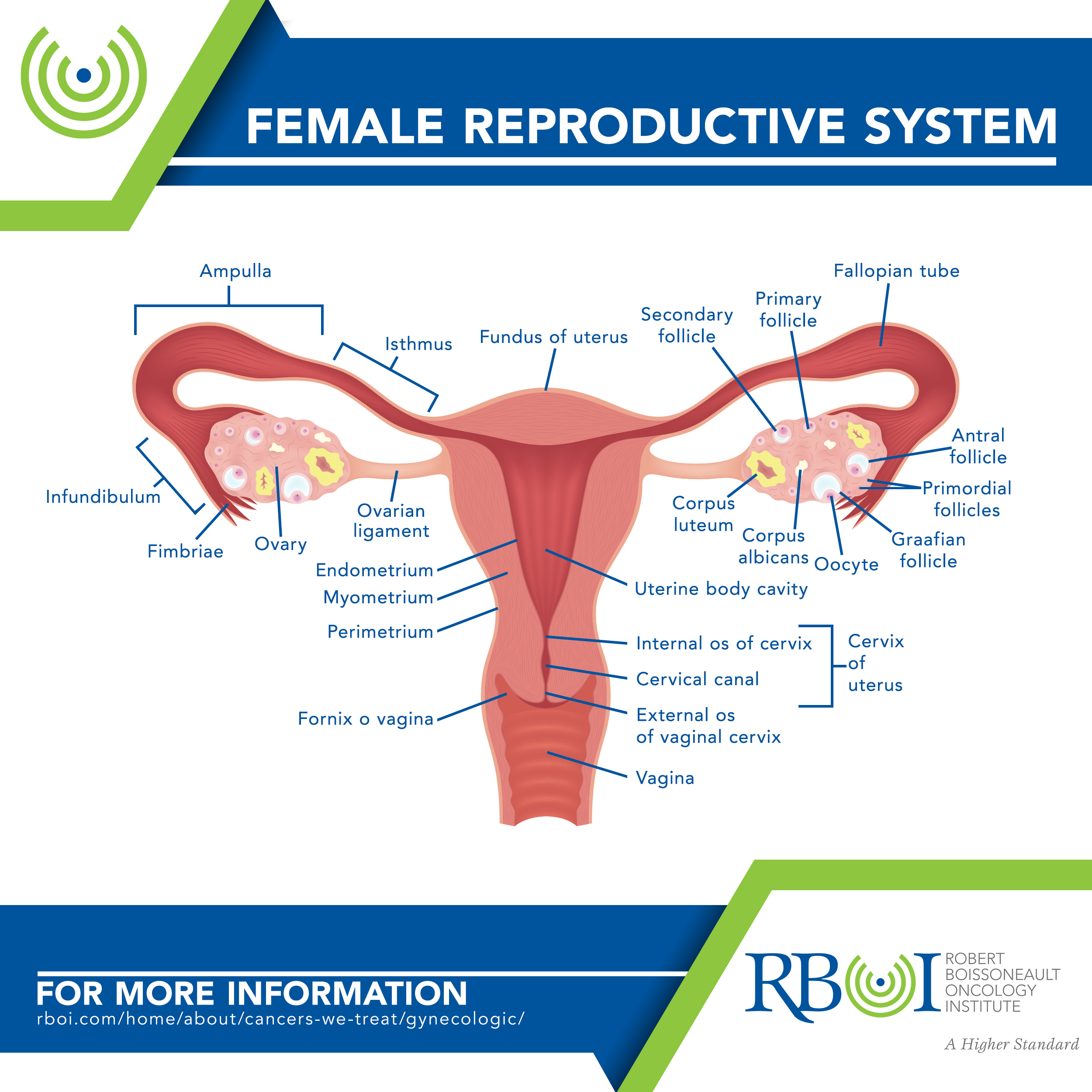Vaginal Cancer
Vaginal cancer is an uncommon cancer of the female reproductive system. When found early, this cancer can often be cured.
-
Forms of vaginal cancer
Squamous cell carcinoma can develop in the cells lining the vagina, most often in the area closest to the cervix. This type of carcinoma makes up 85 to 90 percent of vaginal cancers.
Adenocarcinoma begins in the vaginal gland tissue. It makes up about 5 to 10 percent of vaginal cancers. The most common type of vaginal adenocarcinoma is found in women older than 50.
Clear cell adenocarcinoma occurs in women whose mothers took the drug diethylstilbestrol (DES) during pregnancy between the late 1940s and 1971. It is estimated that 1 woman out of 1,000 women exposed to DES will develop vaginal cancer.
Melanoma in the vagina is very rare. It is usually found on skin in parts of the body commonly exposed to the sun, but it can also develop where there is no sun exposure.
Sarcomas make up less than 3 percent of vaginal cancer cases. They form deep in the wall of the vagina, not on its surface. The most common type of sarcoma affecting the vagina is rhabdomyosarcoma, which is most often found in children and is rare in adults. Another sarcoma, called leiomyosarcoma, tends to occur in women older than 50.
-
Risk factors for vaginal cancer
Age, Cervical cancer, Diethylstilbestrol (DES) exposure, Human papillomavirus (HPV), Smoking, Vaginal adenosis
Age — Squamous cell carcinoma most often occurs in women between 50 and 70 years old. Around half of women with vaginal cancer are older than 60.
Cervical cancer — Women who have had cervical cancer or cervical precancerous conditions have an increased risk of vaginal squamous cell cancer.
Diethylstilbestrol (DES) exposure — Women whose mothers took this drug during their pregnancy between the late 1940s and 1971 have an increased risk of clear cell adenocarcinoma. The average age of diagnosis is 19. Because most women whose mothers who took DES are now between 50 and 70, the number of cases has decreased substantially, and now this is a rare tumor. The long-term risks of DES exposure are not known.
Human papillomavirus (HPV) — Infection with HPV, most commonly contracted through sexual activity, causes two-thirds of vaginal cancer cases. Vaccines that protect against HPV infection may reduce the risk of vaginal cancer.
Smoking — Smoking more than doubles a woman’s risk of getting vaginal cancer.
Vaginal adenosis — In about 40 percent of menstruating women, one or more areas of the vagina may be lined by glandular cells called adenosis. This occurs in nearly all women who were exposed to DES during their mothers’ pregnancy. Having adenosis increases the risk of developing clear cell carcinoma, but this cancer is still very rare. The risk of clear cell carcinoma in a woman who has adenosis unrelated to DES is extremely small.
-
Factors with unclear effects on vaginal cancer risk
Alcohol — Drinking alcohol might affect the risk of vaginal cancer. A study of alcoholic women found more cases of vaginal cancer than expected, but it did not look at other factors. A more recent study that took other risk factors into account found a decreased risk of vaginal cancer in women who do not drink any alcohol.
Previous radiation therapy — Some studies suggest that treating cervical cancer with radiation therapy may increase the risk of vaginal cancer, but this was not seen in other studies. More research is needed.
Vaginal irritation — Some studies suggest that long-term (chronic) irritation of the vagina in women using a pessary (a device used to treat uterine prolapse) may slightly increase the risk of squamous cell vaginal cancer. But this is very rare, and no studies have clearly proven that pessaries cause vaginal cancer.
-
Symptoms of vaginal cancer
Vaginal cancer might not cause symptoms when it is small and confined only to the cells lining the vagina. Invasive vaginal cancer tends to be bigger and has spread into nearby tissues, like deeper into the vaginal wall. Symptoms appearing in most women with invasive vaginal cancer include:
Abnormal vaginal bleeding (often after sexual intercourse). This is the most common symptom of vaginal cancer.
Abnormal vaginal discharge
A mass or lump in the vagina that can be felt
Pain during sexual intercourse
Advanced vaginal cancer has spread beyond the vagina to nearby structures and lymph nodes
and can cause the following symptoms:Painful urination
Constipation
Pain in the pelvis or low in the belly
Back pain
Swelling in the legs
Abnormal bowel function
-
How is vaginal cancer treated with radiation?
External beam radiation therapy (EBRT) alone may be used to treat lymph nodes in the groin and pelvis.
Radiation therapy is sometimes used in addition to chemotherapy to treat more advanced cancers.
Radiation therapy is occasionally given before surgery to shrink the tumor.
Intracavitary brachytherapy delivers radiation internally and is often used along with external beam radiation therapy. In this method, tiny tubes of a radioactive substance are placed in the vagina for 1 to 2 days.
Another type of brachytherapy is interstitial radiation therapy, in which radioactive material is injected directly into the tumor.

Click here to learn more about RBOI’s radiation treatment options
Click here to watch a walk-through of what is involved in radiation treatment at RBOI
More extensive information about vaginal and other cancers may be found at these sites:
American Cancer Society: Cancer.org
American Society of Clinical Oncology: Cancer.net
National Cancer Institute: Cancer.gov
